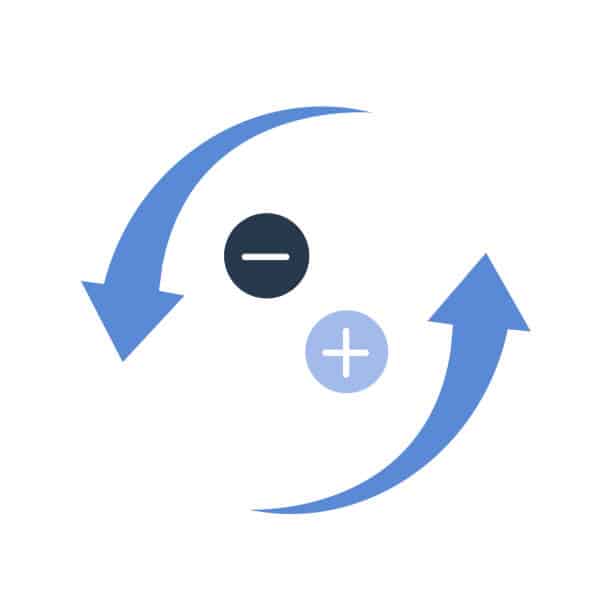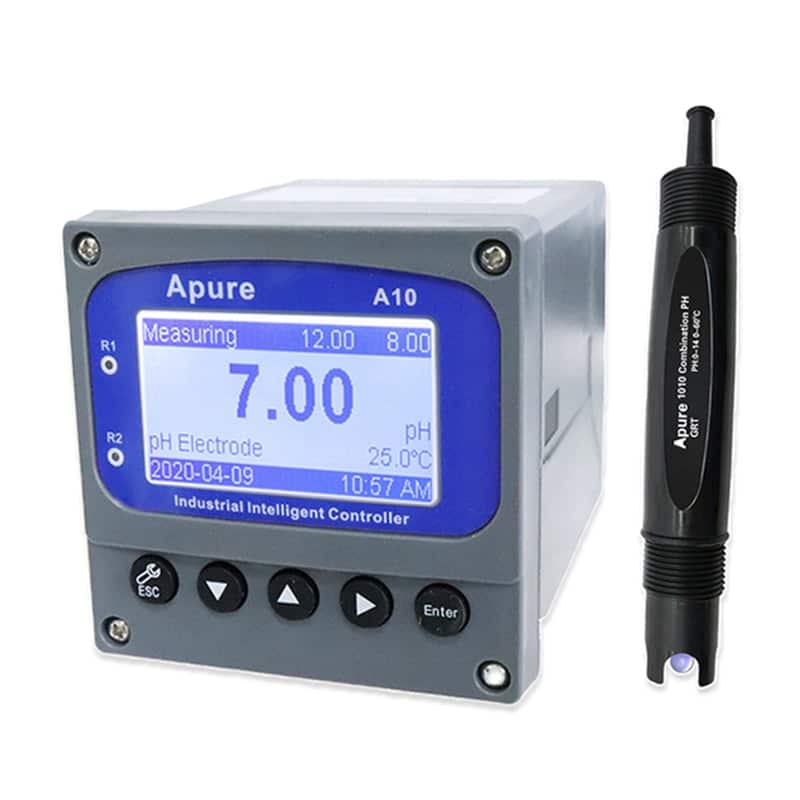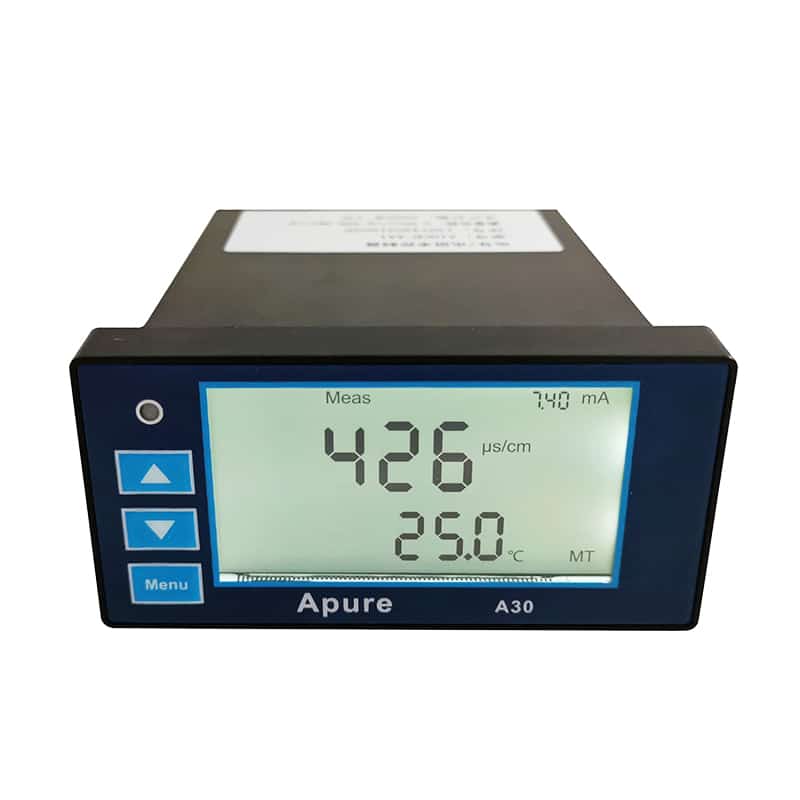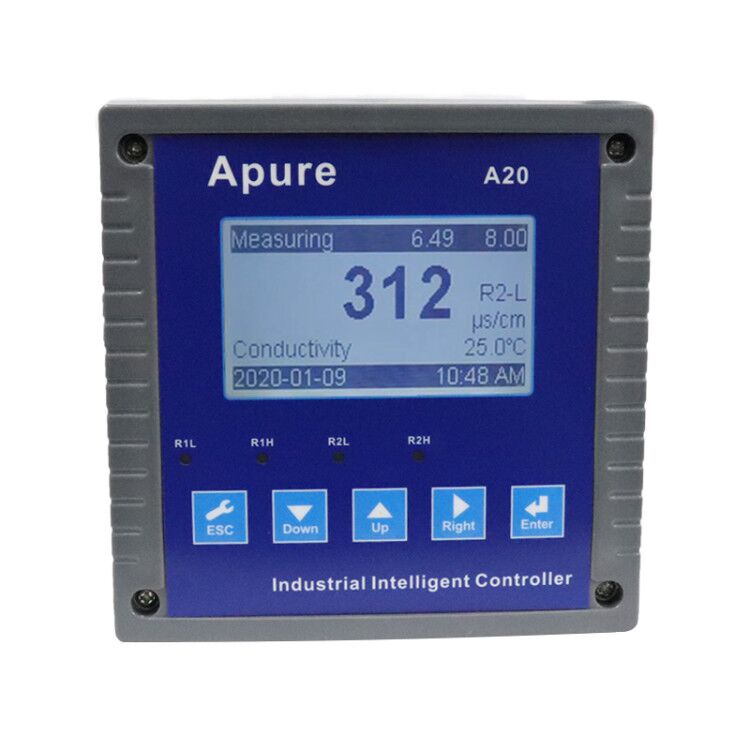Ion exchange is a chemical process involving the mutual exchange of ions between solid particles (ion exchange resins) and a liquid, such as water. The importance of the ion exchange process is that it effectively removes harmful ions from water, improves water quality, and enables water to meet the requirements of various uses.
What is ion exchange?
Define ion exchange

Ion exchange is a chemical process involving the absorption of ions from a liquid, such as water, by an ion exchange resin and the simultaneous release of equal amounts of other ions, thereby changing the chemical composition of the liquid. Ion exchange is the basis for many water treatment and chemical applications, such as water softening, desalination, metal separation, and wastewater treatment.
Working principle of the ion exchange process
- Ion exchange resins are composed of solid particles with a large number of charge sites that adsorb ions from liquids.
- When a liquid (such as water) passes through an ion exchange resin, the resin adsorbs specific ions from the water and releases equal amounts of other ions at the same time. For example, during water softening, the ion exchange resin adsorbs hardness ions (such as calcium and magnesium ions) from the water and releases an equal amount of sodium ions.
- As more and more liquid passes through the ion exchange resin, the charge sites on the resin are gradually used up, and the resin needs to be restored by adding a regeneration solution (e.g., brine containing a large number of sodium ions). During the regeneration process, the ions in the regeneration solution will replace the ions adsorbed on the resin, restoring the ion exchange capacity of the resin.
- After this process is completed, the ion exchange resin can be used for ion exchange again, forming a cycle.
Components involved in the ion exchange process
What are ion exchange resins and how do they work?

Ion exchange resins are porous, tiny solid particles composed of organic polymers (usually polystyrene) that can adsorb ions within and on their surfaces. The resin contains functional groups that can adsorb ions, such as sulfate (-SO3H) and amine (-NH2). These functional groups can adsorb ions in water and release other ions at the same time.
The working principle of ion exchange resins involves the following main steps:
- Adsorption Phase: As water flows through the resin, functional groups on the resin adsorb ions from the water. For example, in a water softening application, the sulfate clusters on the resin (with one hydrogen ion, H+) will adsorb calcium (Ca2+) or magnesium (Mg2+) ions in the water and release two hydrogen ions at the same time.
- Saturation stage: As more and more ions are adsorbed, the functional groups on the resin will be gradually used up. At this point, the resin can no longer adsorb more ions, known as saturation.
- Regeneration Stage: Saturated resins require a regeneration process to restore their ion exchange capacity. During the regeneration process, a regeneration solution (e.g., brine containing a large amount of sodium ions) flows through the resin, and the calcium or magnesium ions on the resin are replaced by sodium ions in the regeneration solution, which are released and discharged with the wastewater. At this point, the resin returns to its initial form and once again has the ability to adsorb ions.
This is the basic principle of how ion exchange resins work. It is important to note that there are many different types of ion exchange resins, and they may differ in the types of ions they adsorb and release, how they adsorb and release them, and so on, the most common ion exchange resins:
- Cation Exchange Resin: This resin has negatively charged sites and is used to adsorb cations in water, such as calcium (Ca2+) and magnesium (Mg2+) ions, which is the main process of water softening.
- Anion Exchange Resin: This resin has positively charged sites and is used to adsorb anions in water, such as nitrate (NO3-) and fluoride (F-) ions.
Equipment used in the ion exchange process in water treatment
Softening stage
Often found in the pre-treatment stage of domestic and industrial water, especially when the water is hard(A TDS meter can be used to monitor water hardness) and needs to be supplied to equipment such as boilers and heat exchangers. Hard water tends to form precipitates when heated, which may lead to scaling of the equipment, affecting its efficiency and life. Therefore, it is necessary to remove the hardness ions by ion exchange, i.e., to “soften” the water. At this stage, it may be necessary to use a water hardness tester to monitor the concentration of calcium and magnesium ions in the water to determine the softening effect(A10 EC Electrical Conductivity Meter). A PH meter is also necessary to monitor the acidity or alkalinity of the water to ensure that the softening process is carried out properly. Apure A10 Aquarium ORP pH Controller and A30 Digital TDS EC Meter meet these needs.


Removal of specific ions stage
Often found in wastewater treatment, drinking water treatment and other processes. For example, wastewater may contain heavy metal ions, organic matter, nutrients (e.g., nitrogen, phosphorus) and other pollutants, which can be effectively removed by ion exchange. Another example is that if drinking water contains excessive fluoride ions, nitrates, etc., they can also be removed by ion exchange. At this stage, ion concentration meters or ion-selective electrodes may be required to detect the concentration of specific ions, as well as PH meters and conductivity meters to monitor changes in the acidity and alkalinity of the water and the total ion concentration. The A20 EC Water Conductivity Tester is a new controller that simultaneously measures pH/ORP and temperature.

Desalination stage
It is often found in processes such as desalination of seawater, preparation of pure water and ultrapure water. These processes require the removal of all dissolved ions from the water in order to achieve high water quality standards, hence the need for ion exchange desalination. It is emphasized here that desalination is the process of removing salts from water and can be achieved by different methods such as reverse osmosis, ion exchange and evaporation. Salinity meters are mainly used to measure the salinity or concentration of dissolved salts in water, not to measure the desalination process. During the desalination stage, a conductivity sensor(Measured by KDM EC Electrical Conductivity Sensor) or resistance meter is needed to monitor the conductivity or resistance of the water in real time to determine the desalination effect. A PH meter may also be needed to monitor the acidity or alkalinity of the water. The Apure RP-3000 Automatic pH ORP Controller is a great choice.

Regeneration stage
This is a phase that must occur in all water treatment processes that use ion exchange resins. Whether it is softening, removal of specific ions, or desalination, after a certain amount of ions have been adsorbed, the ion exchange capacity of the ion exchange resin decreases and needs to be restored through regeneration. At this stage, a conductivity meter and a PH meter are needed to monitor the conductivity and acidity/alkalinity of the regeneration solution to determine the regeneration effect of the resin.
Standard values to be achieved during ion exchange
| Stage | Monitoring Equipment | Common Standard Values |
| Softening Stage | Water Hardness Tester | Water hardness should typically be reduced to less than 20 mg/L (calculated as CaCO₃) |
| pH Meter | The pH value should typically be maintained between 7.0-7.5 | |
| Removal of Specific Ions Stage | Ion Concentration Meter/Ion Selective Electrode | This depends on the type of specific ion. For example, fluoride in drinking water should be less than 1.5 mg/L, heavy metal ions should be reduced as much as possible |
| pH Meter | The pH value should typically be maintained between 7.0-7.5 | |
| Conductivity Meter | Conductivity depends on ion concentration | |
| Desalination Stage | Conductivity Meter/Resistivity Meter | Conductivity should typically be less than 1 μS/cm, and for ultrapure water, it should be less than 0.055 μS/cm |
| pH Meter | The pH value should be close to 7.0 as much as possible | |
| Regeneration Stage | Conductivity Meter | Conductivity should noticeably increase |
| pH Meter | This depends on the type of regenerant. For example, if hydrochloric acid or sodium hydroxide is used as a regenerant, the pH value should be between 1-2 or 12-13 |
Other equipment and maintenance required in the ion exchange process
- Ion Exchange Resin Columns: These are the primary containers for ion exchange resins. Ion exchange columns can come in a variety of sizes and shapes, depending on the specific application and flow requirements.
- Pump: The pump is used to push the water and regeneration solution through the ion exchange column.
- Valves: Valves are used to control the flow of water and regeneration solution.
- Controllers: Controllers are used to automatically control the entire ion exchange process, including water flow rate, regeneration time and frequency, and so on.
The following points need to be kept in mind when using these devices and machines:
- Regular maintenance and upkeep: Regularly checking the operation status of the equipment and carrying out regular maintenance and upkeep of the pumps, valves and other equipment can avoid equipment failure and prolong the service life of the equipment.
- Reasonable operation: the correct use and operation of equipment, follow the operating manual and safety regulations, can avoid safety accidents.
- Correct selection of equipment: selecting equipment suitable for specific applications and water quality conditions can improve the effectiveness and efficiency of ion exchange.
- Environmental considerations: Considering the environmental impact in the design and operation of the equipment, such as minimizing the generation of wastewater and carrying out reasonable treatment and disposal of waste, can reduce the impact on the environment.
- Quality control: Regularly use monitoring instruments to test the water quality in order to assess the effect of ion exchange and make necessary adjustments.
Ion exchange applications
- Water treatment: softening, desalination, removal of specific contaminants
- Medical and pharmaceutical: production and purification of pharmaceuticals, medical treatments
- Food and beverage industry: removal of impurities and toxins
- Nuclear energy: water treatment for nuclear power plants
- Chemical industry: catalysts, separation and purification of various chemical reactions
- Metals industry: extraction of metals from ores, removal of toxic metals from waste water
Benefits of ion exchange
- Improving water quality
- Protecting equipment from scale and corrosion
- Enabling the production and purification of pharmaceuticals
- Improves the safety of food and beverages
- Contribution to environmental protection
Challenges and future developments in ion exchange
While ion exchange is a very effective method of water treatment, it faces a number of limitations and challenges, including:
Resin Regeneration: Ion exchange resins need to be regenerated to restore their ion exchange capacity after a certain number of ions have been adsorbed. The regeneration process usually involves cleaning the resin bed with an acid, alkali or salt solution, a process that requires a certain amount of energy and chemicals. In addition, the regeneration process may also produce waste streams containing high concentrations of ions, which require suitable treatment.
Waste Disposal: As mentioned above, the regeneration process of ion exchange resins generates waste liquids containing high concentrations of ions. These waste liquids need to be disposed of in a suitable manner to avoid polluting the environment. However, the treatment of these waste liquids requires a certain cost, as well as suitable equipment and processes.
System Maintenance: Ion exchange systems need to be inspected and maintained on a regular basis to ensure proper operation. This may include checking the physical condition of the resin beds to ensure that the resins are not worn or damaged, as well as regular testing of the effluent quality to confirm the effectiveness of the system’s treatment.
Resin Life: Although ion exchange resins can be regenerated to restore their ion exchange capacity, each regeneration process may cause some damage to the resin. After a certain number of regenerations, the ion exchange capacity of the resin will gradually decline, which requires the replacement of new ion exchange resin.
Selectivity: Although the ion exchange resin has a better ability to remove ions, its adsorption capacity for different ions is different. For some specific ions, a specific ion exchange resin may be required for effective removal.
Cost: Although ion exchange is an effective water treatment method, it requires a certain investment in equipment, as well as energy and chemical consumption during operation. This requires the cost-effectiveness of these factors to be taken into account when designing a water treatment system.
Despite the many challenges facing ion exchange technology, researchers and engineers have been addressing them through technological innovation and the development of new materials. Below are some of the latest research and technological developments:
More sustainable regeneration methods: In order to reduce the environmental impact of the ion exchange regeneration process, researchers are investigating the use of more environmentally friendly regeneration agents, such as low-concentration acids or bases, or even the use of electrochemical methods to regenerate ion exchange resins.
High-efficiency waste liquid treatment technology: In order to deal with the waste liquid produced by ion exchange regeneration, researchers are developing new waste liquid treatment technology, such as reverse osmosis, evaporation and other high-efficiency separation technology, and even research on how to utilize the ionic resources in the waste liquid.
High-strength and long-life ion-exchange resins: Materials scientists are developing new types of ion-exchange resins that have higher mechanical strength and chemical resistance, and can withstand more regeneration processes, thus extending their service life.
Highly selective ion exchange resins: By designing and improving the chemical structure of ion exchange resins, researchers are developing new types of resins that can specifically adsorb specific ions, increasing treatment efficiency and reducing waste stream generation.
Application of machine learning and big data in ion exchange systems: With the help of machine learning algorithms and big data technologies, it is possible to optimize the operation of ion exchange systems, such as predicting the life of resins, optimizing regeneration cycles, and adjusting treatment parameters in real time to improve treatment effectiveness and efficiency.
Summary
Ion exchange is a critically important technology with widespread applications, particularly in water treatment, where it plays a key role in the removal of harmful substances, as well as improving the taste and appearance of water.
We encourage everyone to have a deeper understanding and learning of ion exchange technology. Whether you are a scholar, engineer, policymaker, or a member of the general public, understanding and focusing on ion exchange technology will help us better protect our environment, improve our quality of life, and promote the development of related scientific research and technology.
With over 16 years of instrumentation experience, Apure has grown to become a leading instrumentation manufacturer in China and a one-stop shop for customers worldwide. We provide water quality analyzer, flow meter, level measurement, pressure measurement, temperature measurement and ozone generator. Feel free to contact us.
